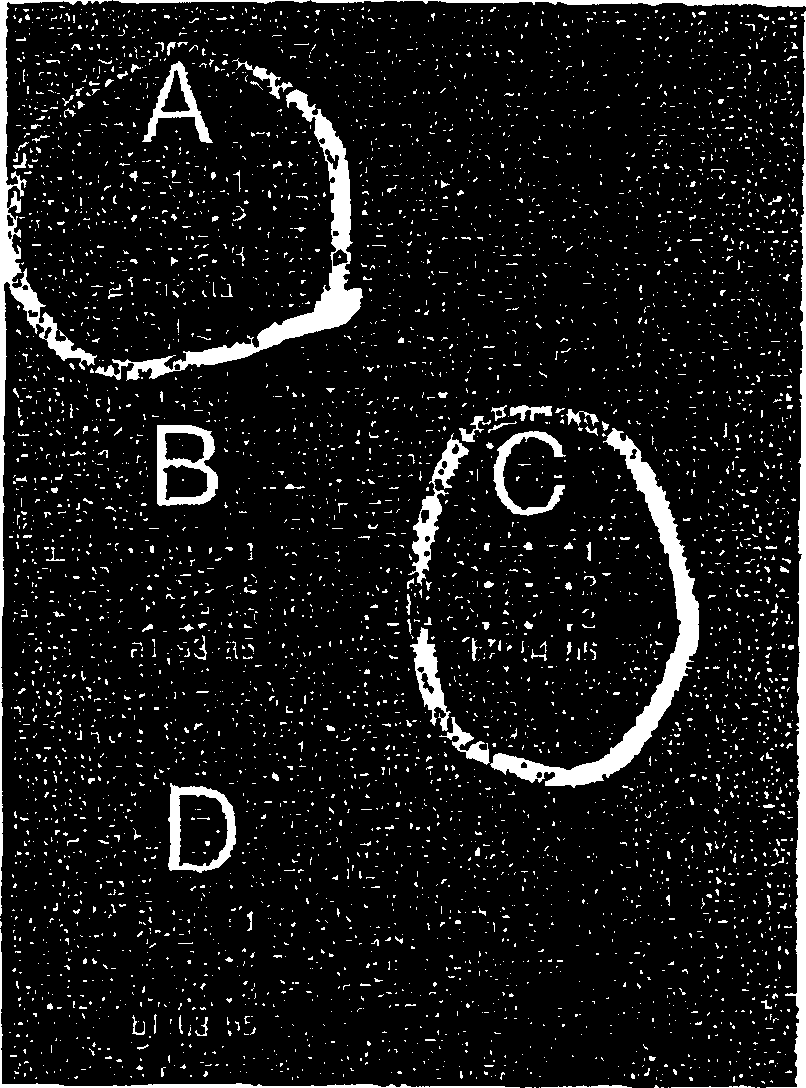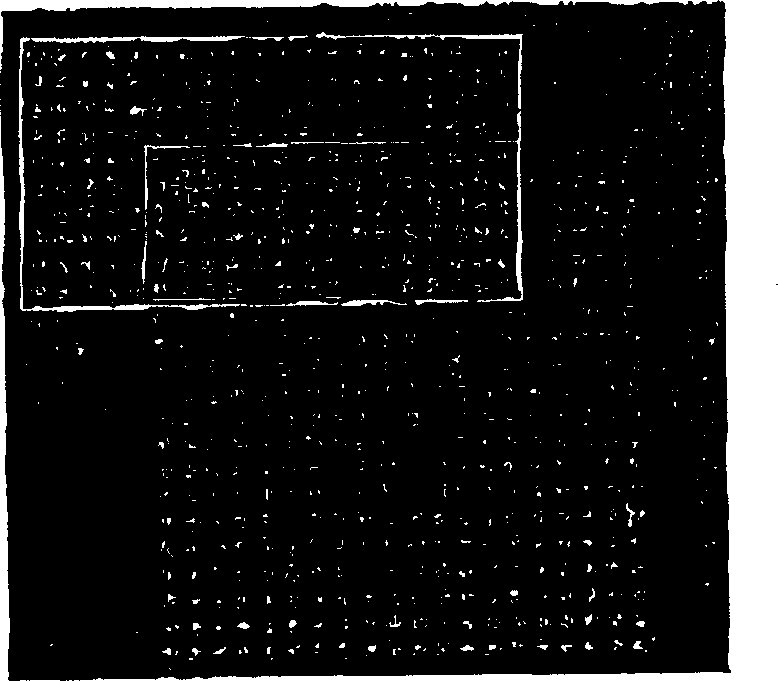Method for preparation of optical biochemical sensor devices
A chemical sensor, sensor technology, applied in chemical instruments and methods, measuring devices, scientific instruments, etc., can solve problems such as difficulty in reproducing the size of deposited liquid spots, incompatibility, etc.
- Summary
- Abstract
- Description
- Claims
- Application Information
AI Technical Summary
Problems solved by technology
Method used
Image
Examples
Embodiment 1
[0114] Improvement of Commercially Available "Pin-Ring" Array Printer
[0115] A commercially available "needle-and-ring" array printer (Affymetrix 417, formerly from Genetic Microsystem as GMS 417) was modified to accommodate deposition involving polymers or polymer precursors rather than biological or biochemical liquids, i.e. modified for use with components such as ethanol Continuous use of organic solvents to rinse the needle. Tubing is usually silicone, changed to more solvent resistant FEP (fluoroethylene-propylene) tubing. In a similar manner, the pump (AS Thomas) delivering the flushing liquid to the flushing station was removed and replaced by a "chemical resistant" type of the same type. The guard lock of the door was disabled so that the needle could be washed manually with tetrahydrofuran using a wash bottle. Flow restrictors are installed on the rinse solvent lines instead of (or in addition to) the clamps to enhance control of the solvent sprayed out of the ...
Embodiment 2
[0117] Prepare many tiny PVC dots on glass material
[0118] Dissolve 33 mg of poly(vinylamine) (PVC) (high molecular weight) and 66 mg of plasticizer bis(2-ethylhexyl) sebacate in 800 μL of cyclohexanone, and fill 35 μL of the resulting spotting liquid into 256 wells Well A1 of a polypropylene microtiter plate. Typical arrays of PVC dots can be easily deposited on substrates such as commercially available glass or gold-coated glass microscope slides ( figure 1 ). Other support surfaces can be placed in the container by using conventional metal liners. To remove PVC-DOS residue, the needle was rinsed with tetrahydrofuran. This can be done manually, or a suitable solvent can be used in the rinse tube and bath in a correspondingly modified instrument.
Embodiment 3
[0120] Fabrication of many tiny sodium-selective (bio)chemical sensor dots
[0121] 2.9 mg of 9-(diethylamino)-5-octadecanoylimino)-5H-benzo[a]phenoxazine, 4.6 mg of tetrakis[3,5-bis(trifluoromethyl) Sodium phenyl]borate, 10.0 mg of 4-tert-butylcalix[4]arene-tetraethyl tetraacetate, 139.2 mg of bis(2-ethylhexyl) sebacate, and 69.1 mg of poly(vinyl chloride) (high molecular weight) was dissolved in 2.0 ml cyclohexanone. 35 μL of the resulting spotting liquid was filled into well A1 of a 256-well polypropylene microtiter plate. Plasticized PVC-based sodium-selective (bio)chemical sensor dots were fabricated on gold-coated microscope slides using a GMS417 array printer with 125 μm needles. The functionality of the sensor dots, i.e. responsive to the target ion sodium in buffer solution, can be demonstrated using fiber optic absorptivity spectroscopy or surface plasmon resonance spectroscopy, respectively. The latter detects refractive index changes in thin films, which are r...
PUM
 Login to View More
Login to View More Abstract
Description
Claims
Application Information
 Login to View More
Login to View More - R&D
- Intellectual Property
- Life Sciences
- Materials
- Tech Scout
- Unparalleled Data Quality
- Higher Quality Content
- 60% Fewer Hallucinations
Browse by: Latest US Patents, China's latest patents, Technical Efficacy Thesaurus, Application Domain, Technology Topic, Popular Technical Reports.
© 2025 PatSnap. All rights reserved.Legal|Privacy policy|Modern Slavery Act Transparency Statement|Sitemap|About US| Contact US: help@patsnap.com



